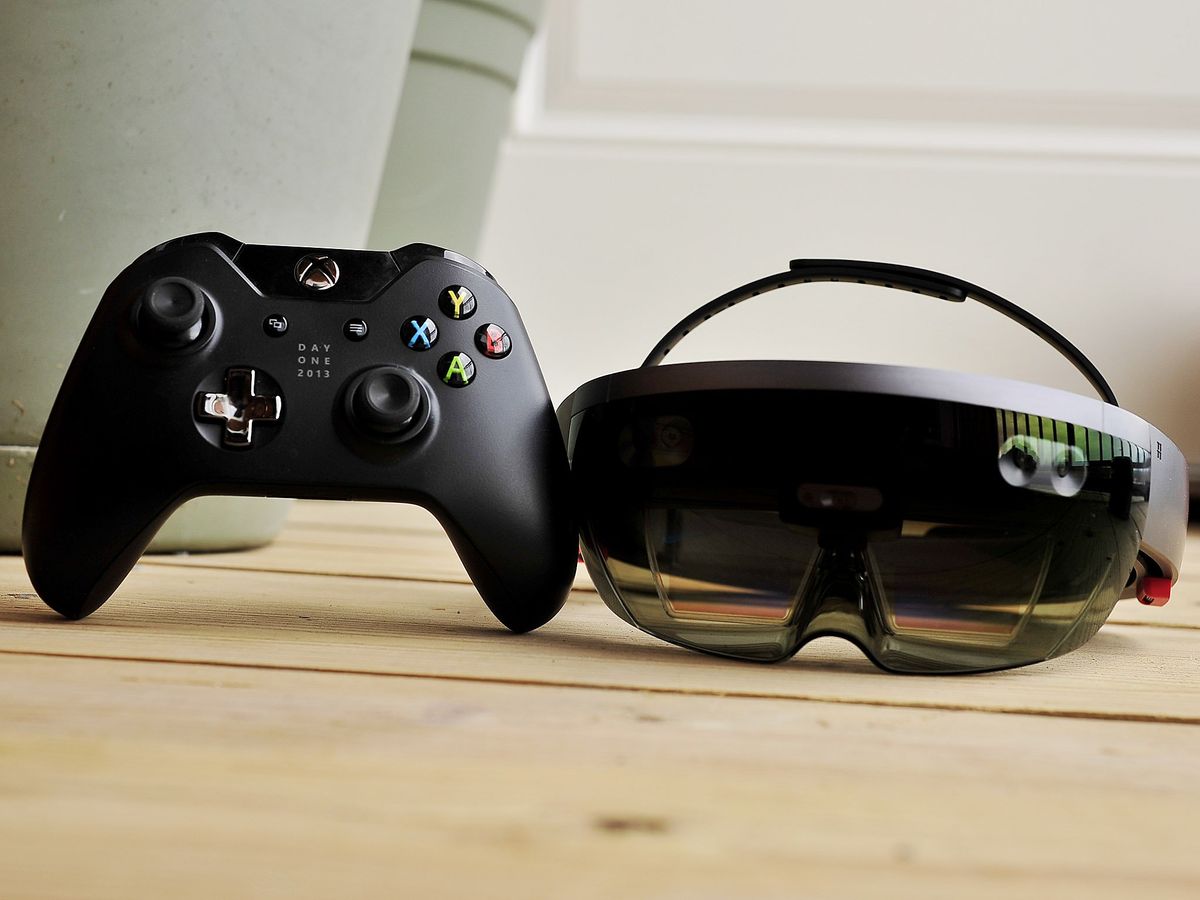You can totally stream Xbox One games to the HoloLens and play them

As I continue to explore what can and can't be done on the Microsoft HoloLens there are always little surprises here and there.
One of those is the ability to use the Xbox app for Windows 10 to connect to and stream Xbox One content to the HoloLens. In and of itself, this should not be surprising. HoloLens is, after all, just another Windows 10 PC. Still, as a proof of concept it I decided to give it a shot, and it works just fine.
To make it all happen, I just went to the Windows Store on HoloLens and installed the Xbox (beta) app. Since the HoloLens and Xbox One were on the same network, they linked up with no issues using the Connect feature. After making sure the Xbox One was logged into my account, I decided to Stream to my HoloLens just like you would on your Windows 10 PC.
To control the Xbox you just need to have a wireless controller turned on to control the Xbox One directly (it cannot pair to the HoloLens as far as I know, at least not yet). From there on out it was just a matter of playing the game.
Any game.
I played Quantum Break and even Rocket League to test the setup. My network is pretty solid, so I had virtually no lag between the TV and the HoloLens. In fact, I was able to put the hologram of the Xbox app and stream right next to my TV for a 1:1 to compare between the two. Same goes for framerates, which seemed the same to my eyes.

Note: Photos on the HoloLens are taken using the built-in 2MP camera. Needless to say, the resolution is far, far below what you experience, so consider it a rough idea of what it looks like. The experience is much better!
Get the Windows Central Newsletter
All the latest news, reviews, and guides for Windows and Xbox diehards.
A limitation, however, was with video recording. While I could record video of the game stream the HoloLens began to hit its limits as the game started to stutter and I saw a massive increase in lag. What gives, Microsoft? Can't I stream an Xbox One game to my 3D holographic wearable computer and record 720P video at the same time? (That was sarcasm, by the way). Anyway, that is why there is no accompanying video to demonstrate this feat in computing.
How big can you make it?

You can make a 2D hologram quite large. The most significant limitation is the field-of-view on the HoloLens as eventually you can make it big enough that you will have to pan your head to "see" the whole app.
For laughs, though, I was able to make the hologram equal to and larger than my 55-inch Samsung TV (see the above image; the TV is the lower one). Even at a 65-inch span, I was able to play on my couch with no issue.
What about the absence of the color black?

One limitation of the HoloLens is the inability to display blacks. That sounds huge, but there are optical tricks your eyes play on you to make up for it. For instance, just having a background that is slightly darker than the projected hologram gives you that 'darker' feel and it seems like a black color.
The only thing I can say about this issue is unless I told you about you would likely not even notice it. In comparing it to the game I was playing, I could not see that the difference was, so I'm putting this under things not to worry about.
Is this a real alternative?

Although there is no lag with the stream and I could make the windows as big as I wanted color depth, resolution, and sharpness is likely much better on an actual TV (especially my high-end Samsung one, ahem).
However, putting aside what I think is an obvious difference game streaming on the Xbox One to HoloLens is entirely doable and hardly a bad experience. For hardcore gamers, it could be fun to use in another room in the house as you can make your wall 'one big TV' (assuming your wireless controller reaches; hopefully, wireless Xbox controller support will come directly to the HoloLens).
Besides gaming, you can also use any app that streams on the Xbox One as well, so there is potential there to have some fun.
Anyway, if you have any questions ask away in comments and I'll try to answer!
More info

Daniel Rubino is the Editor-in-chief of Windows Central. He is also the head reviewer, podcast co-host, and analyst. He has been covering Microsoft since 2007 when this site was called WMExperts (and later Windows Phone Central). His interests include Windows, laptops, next-gen computing, and wearable tech. He has reviewed laptops for over 10 years and is particularly fond of 2-in-1 convertibles, Arm64 processors, new form factors, and thin-and-light PCs. Before all this tech stuff, he worked on a Ph.D. in linguistics, performed polysomnographs in NYC, and was a motion-picture operator for 17 years.